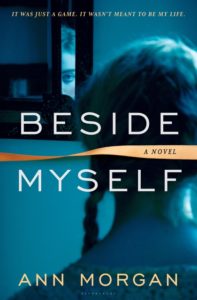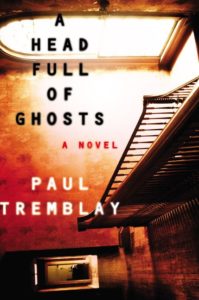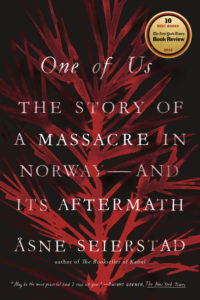Children both fictional and real can seem frightening, or even threatening. Sometimes it’s those searching eyes, staring, making silent evaluations as they try to make sense of their world—or of you. Other times it’s the exact opposite—a tantrum of such unlikely proportions that even the most grounded person might reconsider the possibility of a supernatural origin. Often there’s this sense that kids aren’t quite like “us,” but function on a slightly different plane with its own rules and emotions. Though many adults are quick to underestimate children, I think it’s wrong to do so: a young child can be just as complex, creative, and intelligent as an adult (in spite of their age or limited experience)—and possess as much inner strength, or anger, or intuitive awareness of the Darwinian need for dominance.
For all of these reasons, crime fiction lends itself well to a contemplation of children, and especially of those for whom their ethical compass has gone awry. Writers are free to drop the pretense that children are always innocent, and can acknowledge things that others might be hesitant to say about a child’s capacity for darkness. Both in fiction and real life, adults aren’t sure what to do when a child behaves in an aberrant way—and they may hesitate to admit that they’ve contributed to the problem. Here are a few examples of books that explore “scary children” in different ways, and make you question who is ultimately to blame:

Ann Morgan, Beside Myself
This is an unsettling little “What if…?” wherein one day a young twin girl decides to steal her more successful sister’s identity, and not give it back. The adults around them are so accustomed to their unique behaviors and style of dress that as the “robber” child impersonates her sister, people only see the “robbed” sister’s protests as signs of her inferior nature. Underlying this deceit is the culpability of parental bias, where—in theory—there should be equal, if not unconditional, love. This nightmare scenario follows the twins into adulthood, where their switched lives continue to have devastating repercussions. Imagine the nightmare of not being believed!

Paul Tremblay, A Head Full of Ghosts
I enjoyed this even more the second time I read it! When troubled teen Marjorie seems to devolve into demonic possession, her unemployed father seeks a priest, who quickly prescribes an exorcism. In theory it’s to help Marjorie, but the attention-loving priest summons a TV crew to document the family’s worst moments, and the financial benefits of the arrangement clouds the father’s motives. It’s all the more chilling to see the story play out through the eyes of Marjorie’s little sister, who suspects, without fully understanding it, that the greedy adults are making everything worse. No wonder both girls struggle with reality.

Doris Lessing, The Fifth Child
Though Harriet and David go against their families’ wishes in their determination to have a bundle of children, in the early years their happy home is a magnet, a place where everyone feels welcome. The disintegration begins with a growing fetus who moves so violently that David averts his eyes from Harriet’s rippling stomach. When their son is born the words “troll” and “goblin” come to mind, but the family pretends he’s just a strong but healthy baby. So healthy Ben sucks out his mother’s milk in a single gulp. Everything worsens as he grows, and Harriet and David are at odds over what—and who—to blame. This story works as a metaphor for how pregnancy can feel like an alien invasion, or how a “special” child can cause a family to unravel, though Lessing apparently had different intentions: many years later she wrote a sequel, “Ben in the World.”

Gillian Flynn, Sharp Objects
Written with a magnifying glass on people’s dark tendencies, this is one of the most disturbing books I’ve ever read. The novel follows a reporter who returns to her rural hometown to break the story of two murdered young girls—both of whom have acquired “bad seed” status in the town’s gossip mill. To say the reporter comes from a troubled family is an understatement: she’s covered with scars from self-harming, her little sister acts like a baby at home and a femme fatale at school, and her other sister is dead. On the surface, Wind Gap is a place with smiling neighbors who bring casseroles in time of need. But the façade hides a rotten core of monstrous children and beastly adults—perhaps the sick dynamic a place where the main industry involves the torture of pigs.

Åsne Seierstad, One of Us: The Story of Anders Breivik and the Massacre in Norway
This may be the scariest example of all, seeing how it documents the childhood and early adulthood of a real mass murderer. Years before Anders Breivik systematically hunted teenagers on an island in Norway—killing nearly seventy—he and his mother were known to the authorities because of various problems Anders was having at school and at home. While some may view this biography as a taxonomy of why his murder spree should have been prevented, I think the more important lesson is that modern society can feel extremely alienating—for numerous reasons—which combines most regrettably with easy access to assault rifles.

















